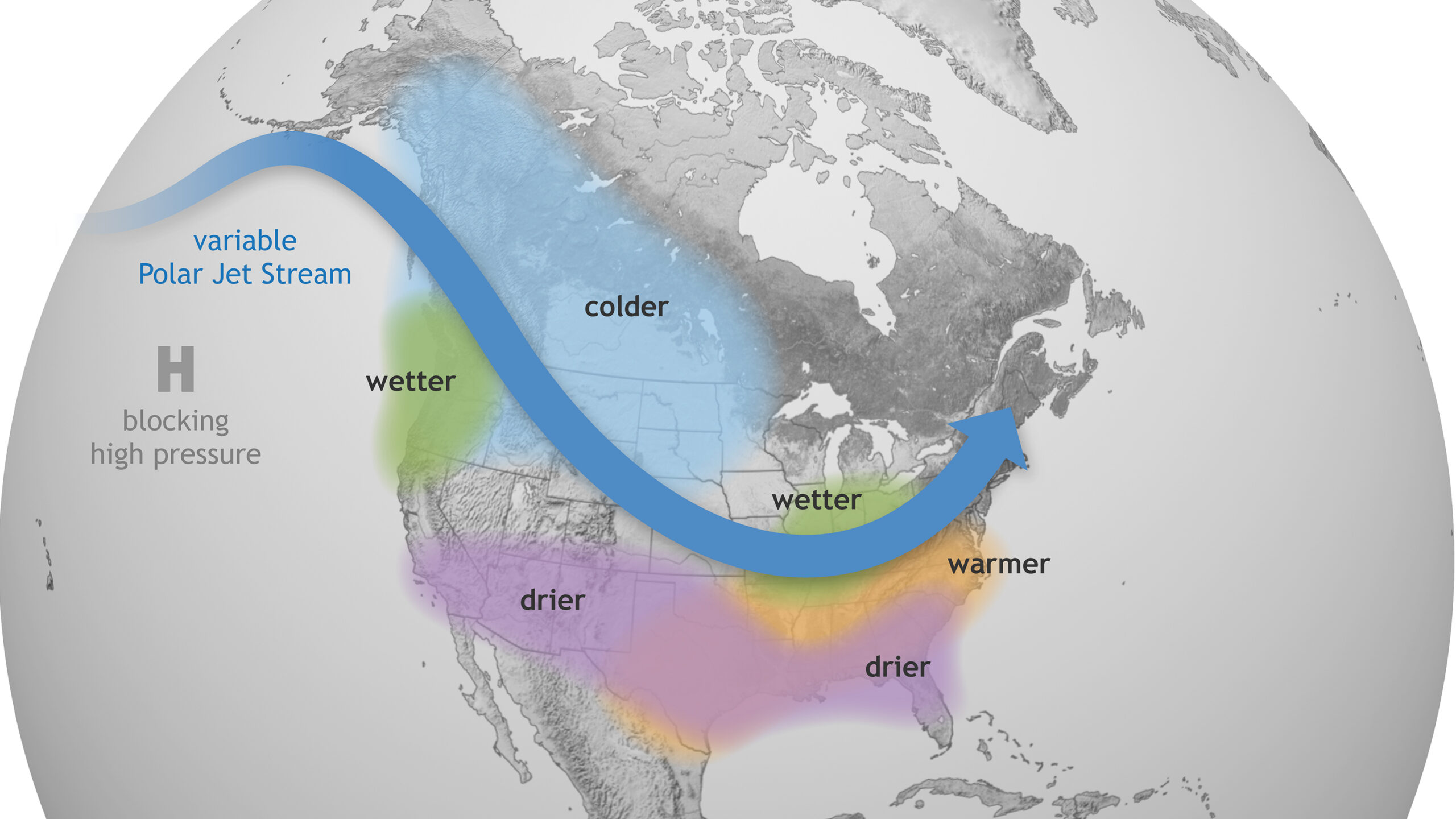What is La Nina?
La Niña is a climate phenomenon characterized by cooler-than-normal sea surface temperatures in the central and eastern tropical Pacific Ocean and is part of the El Niño-Southern Oscillation (ENSO) cycle. Here are the key points explaining La Niña:
- La Niña means “The Little Girl” in Spanish and is the counterpart to El Niño, which involves warmer ocean temperatures in the Pacific.
- It involves a significant cooling of surface ocean waters along the tropical west coast of South America and the central-eastern Pacific.
- The condition is indicated by sea surface temperature decreases of more than 0.5°C (0.9°F) lasting several months (at least five consecutive three-month seasons).
- La Niña is caused by stronger-than-normal easterly trade winds pushing warm water westward, leading to upwelling of cooler water to the ocean surface.
- This cooling affects atmospheric pressure patterns: it lowers air pressure over the western Pacific and raises it over the eastern Pacific.
- The shift in pressure and temperature causes increased rainfall and stronger monsoons in Southeast Asia and northwest India but can cause droughts in the eastern Pacific coast regions like Peru and Ecuador.
- It is associated with increased rainfall in places like southeastern Africa and northern Brazil, while some regions like the US Gulf Coast and tropical South America experience drier conditions.
- The cooling effect supports nutrient-rich upwelling, benefiting marine life and fish populations, especially along the coasts.
- La Niña events usually last from one to three years and often peak during the Northern Hemisphere winter.
- Its global impacts are roughly opposite those of El Niño, affecting weather patterns including hurricanes, droughts, and floods worldwide.
Impact of La Nina on India in 2025
La Niña’s impact on India in 2025 includes several significant weather and climate effects as follows:
- Colder than usual winter: La Niña is expected to bring a harsher and notably colder winter across many parts of India, especially over northern, central plains and hilly Himalayan regions, with temperatures dropping below 10 degrees Celsius in some areas.
- Extended cold waves and frost: Northern India may experience prolonged cold spells and frosty conditions affecting daily life and agriculture, including damage to sensitive crops like mustard and vegetables.
- Increased snowfall in the Himalayas: Enhanced snowfall is likely in Himalayan regions providing benefits to river water reservoirs but also causing travel disruptions.
- Stronger monsoon and rainfall changes: La Niña years tend to bring stronger monsoon rains to India, with higher rainfall expected in 2025, particularly benefiting rain-dependent crops though causing variations in overall crop yields.
- Air pollution and health concerns: The cold conditions can trap pollutants close to the ground leading to smog buildup in urban areas, raising respiratory health risks during winter.
- Cyclones and extreme weather events: The La Niña effect may contribute to increased hurricane and cyclone activities in the Bay of Bengal and surrounding regions, necessitating enhanced disaster preparedness.
- Energy demand impact: The colder weather translates into greater heating needs, boosting energy consumption and potentially straining resources during winter months.
- Regional variation: Northern and central India face colder temperatures and harsher winters, while the southern states such as Tamil Nadu, Kerala may experience wetter conditions during the northeast monsoon.
Overall, the Indian Meteorological Department (IMD) and global agencies have issued alerts and advisories for this La Niña phase affecting the 2025-26 winter and rainfall seasons, highlighting its multifaceted impacts on climate, agriculture, health, and energy.
Temperature may drop below 10 degrees Celsius in parts of India, aligning with the predicted La Niña influence during winter 2025. Thus, the La Niña effect in 2025 is shaping up to bring a colder, wetter, and more variable climate pattern across India with significant societal and environmental implications.

